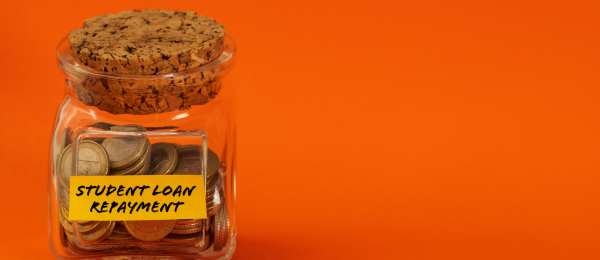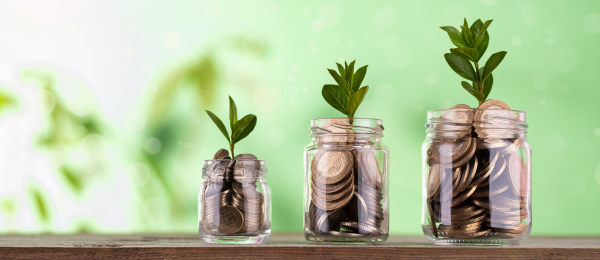- Your HELP repayments kick in once you earn more than $48,361 (for the 2022/2023 financial year)
- The more you earn, the more you have to repay
- Outstanding HELP balances get adjusted once a year by an ‘indexation rate’ which is a percentage rate tied to inflation
- This year’s indexation rate is 7.1% and will be applied to outstanding balances on June 1 2023
- Whether you should pay your HELP debt early, or cop the hit, depends on your personal circumstances
What’s a HELP loan?
When you enrol at uni or other higher education, if you enrol in a Commonwealth-supported place, you’ll most likely end up with a HELP debt. (Older millennials may know this as a HECS debt.)
This is because the government pays for your education on your behalf, with the understanding that as soon as your income becomes high enough, you’ll start paying them back.
How do you check your HELP debt?
You can see your HELP balance in myGov. You can also give the ATO a call.
When do you pay your HELP debt back?
You start paying your HELP debt back as soon as you start earning a set amount of money, which this financial year (2022/23) is $48,361 per year.
Your repayments usually get taken out of your paycheck before you get a chance to spend it, a bit like your superannuation payments do. If you want to, you can make extra payments to pay your debt back sooner.

How is your HELP debt calculated?
Feel like you’ve been repaying your HELP debt forever? It could be because your outstanding balance gets indexed against the Consumer Price Index (CPI), which is the most well-known indicator of inflation. This means the indexation rate behaves a bit like an interest rate for your outstanding HELP debt.
The HELP indexation rate gets applied once a year on 1 June, on any HELP debt you have that’s older than 11 months. Note that 1 June is before the end of the financial year.
How do you pay your HELP debt back?
The ATO takes a set amount of money from your paycheck depending on how much you earn.
This 2022/2023 financial year, It starts at 1% for people who earn from $48,361 - $55,836 p.a. and increases all the way up to 10% if you earn $141,848 or more. You can see your individual rate at the ATO website.
You can also choose whether or not you want to make extra repayments to clear your debt sooner. Once you’ve paid it off (and told the ATO), you’ll get an increase in your take home pay.
How much is HELP indexation in the 2023/2024 financial year?
The HELP indexation rate for 2023/2024 is 7.1%. That means, if your outstanding HELP balance is $10,000, it would grow by another $710 after the indexation date, increasing the amount you have to pay back.
Should you pay your HELP debt early?
It can depend on your outstanding balance, your income, and your goals.
When it comes to your HELP debt, because managing your repayments is generally taken care of by the government, many people treat it like a set-and-forget loan.
But you should understand the arguments for and against paying it off early, so you’re making a considered decision.

Are you saving for your first home?
Your HELP debt can influence your borrowing power.
When you borrow money from a bank or other lender, they take a look at your complete financial picture before deciding if and how much to lend to you. One of the things they consider is how much money you already owe. This can include debts like your car loan, credit cards or Buy Now, Pay Later, and your HELP debt.
If you have a HELP debt, this amount is added to your other debts and the amount you want to borrow, and compared to how much you earn to get a figure called your debt-to-income ratio. If you owe too much money compared to what you earn, banks become reluctant to give you a loan and in some cases refuse to.
On the other hand, it’s super hard to save money for your deposit and other expenses – and using your home deposit savings to wipe out your HELP loan can delay you having a big enough deposit for a loan in the first place.
If home ownership is one of your goals, and you still have a HELP debt, you may be able to take advantage of other programs to minimise the impact.
“I have a HELP debt and was still able to buy my first home,” said a Spaceship colleague.
“I'm sure the debt impacted my borrowing power, but it was still high enough to purchase an apartment in an area that I was happy to live in. I was able to access the First Home Buyer's Deposit Scheme, so I only had to pay a 10% deposit and didn't have to pay LMI. As the price of my property was under the stamp duty threshold, it was also exempt from stamp duty.”
A financial professional such as an accountant or mortgage broker could give you more specific advice here.

Are you taking time off work to travel, retrain or have a baby?
Your HELP debt keeps growing even if you stop working. If you take time out of the workforce, such as for parental leave or a career break, you stop having a paycheck for your repayments to be taken from.
Your total debt will still grow at the index rate, but unless you make other arrangements to keep paying your debt off, it will keep compounding.
This especially sucks for women, who are more likely to have time out of the workforce or switch to part-time work.
Your HELP debt grows with inflation – which won’t be this high forever
Your HELP debt is tied to the rate of inflation. The RBA has a 2-3% inflation target, which it’s generally managed to keep, but over the past year has blown out. There’ve been price increases across the board –including to your HELP debt.
The longer inflation remains heightened, the more of an impact it will have on your HELP debt. On the flipside, when inflation gets back under control, your outstanding HELP debt will go back to growing more slowly, not including repayments.
If you think inflation will remain heightened, you might decide to prioritise your HELP debt, especially if you’re close to paying it off.
What else would you spend the money on?
Depending on your outstanding balance and how much longer it’ll take you to repay it, you could decide there are better uses for your money.
For example, the 10 year average annualised return of the All Ordinaries Index, which is the top 500 companies on the ASX, is 8.11%, (as of 28 April, 2023) so you could decide to invest the money instead. (Although, naturally, past performance is not a reliable indicator of future performance.)
Or, if you’re saving for your first home, you could contribute extra to your super for the First Home Super Saver scheme, and withdraw up to $50,000 worth of voluntary contributions to your super when you’re ready to buy. (There are other taxes and things to watch out for with the FHSS, so make sure you do your research and consider asking an independent finance professional, such as an accountant or financial planner, for more specific advice.)
Or, if you’re thinking even longer-term, you could choose to make extra payments to your super to benefit from the potential return of decades worth of compound interest.
Decided to repay some or all of your loan? You could do it before 31 May to avoid indexation
If you’ve decided that paying your remaining amount is the best move for you, consider making sure your voluntary repayment hits the ATO’s account by 31 May. Outstanding amounts get indexed on 1 June.



